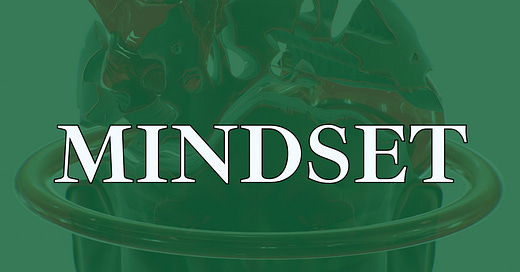MINDSET - Emotional Reasoning And The 'Thinking-Feeling' Cycle
Ways to manage our emotions and thoughts to prevent distortion.
Have you ever heard any of the following sayings:
"Don't let your emotions get the better of you."
"Don't be so impulsive."
"Think before you speak."
These are usually suggestions given in situations that require rational thinking and less impulsivity with our emotions. This is because emotions have a way of clouding our judgment when we feel a higher intensity.
Think about the last time you felt intense love, anger, joy, or anxiety. The heightened rush of those feelings.
When you felt intense anger or anxiety, your mind may have narrowed to focus on thoughts of potential dangers or outcomes that affect you negatively.
When you felt intense love or joy, your mind may have opened to thoughts where you became willing to accept more possibilities.
Intense feelings and emotions can lead to a common cognitive distortion called “Emotional Reasoning,” where we rely on our feelings and emotions as the only sources of information to determine our reality.
Meaning, we believe something to be true because it “feels” true.
Let's use gambling as an analogy to explain emotional reasoning.
We advise gamblers to be careful when betting their money if they are highly emotional. This is because gambling can heighten their emotions and create an exciting or assertive “rush” feeling that can cloud their judgment. Thus, making it difficult to rationalize their decisions and may influence them to risk their money carelessly.
You could say that is what gambling is all about—taking risks for a better payout.
But a smart gambler knows not only when to play but, more importantly, has a clear mind to know when to stop. A smart gambler doesn’t let their emotions get the best of them.
But we don't have to go to a casino to find gamblers who make risky decisions. You can find them everywhere. At work with your boss or colleagues, at home with your family, and at social events with your friends.
They are everywhere, because a risky gambler...
... struggles to manage their emotions,
... creates a reality in their heads that isn't fully accurate,
... puts themselves at risk in ways that could hurt them more than they realize.
All of these qualities of a risky gambler are also related to someone whose thoughts are distorted due to emotional reasoning.
Do these qualities remind you of anyone in your life? Could it be you?
In this article, we will go deeper into the topic of Emotional Reasoning.
Later in part 2 of this article, we will explore areas of our brain to biologically explain how we can get trapped in a 'Thinking-Feeling' cycle, which leads to emotional reasoning.
A Vicious Cycle Of Our Thoughts And Emotions
Video Text
The 'Thinking-Feeling' cycle is a vicious cycle that can negatively influence our thoughts, emotions, and behaviors.
The cycle starts as an initial thought about ourselves or our environment, which connects to our emotions through the use of chemical messengers. Depending on our emotional reactions, we might develop additional thoughts that are distorted, leading to unhelpful behaviors.
So, how can we break free from the Thinking-Feeling cycle of emotional reasoning?
In the next section, we will discuss the biological areas of our brain affected by the thinking-feeling cycle and healthy ways to break away.
To enhance your understanding of Emotional Reasoning, you must learn the process of how it functions in our biological brains. Once you gain more awareness of the brain’s process, you can better catch yourself from the cognitive distortion of emotional reasoning.




